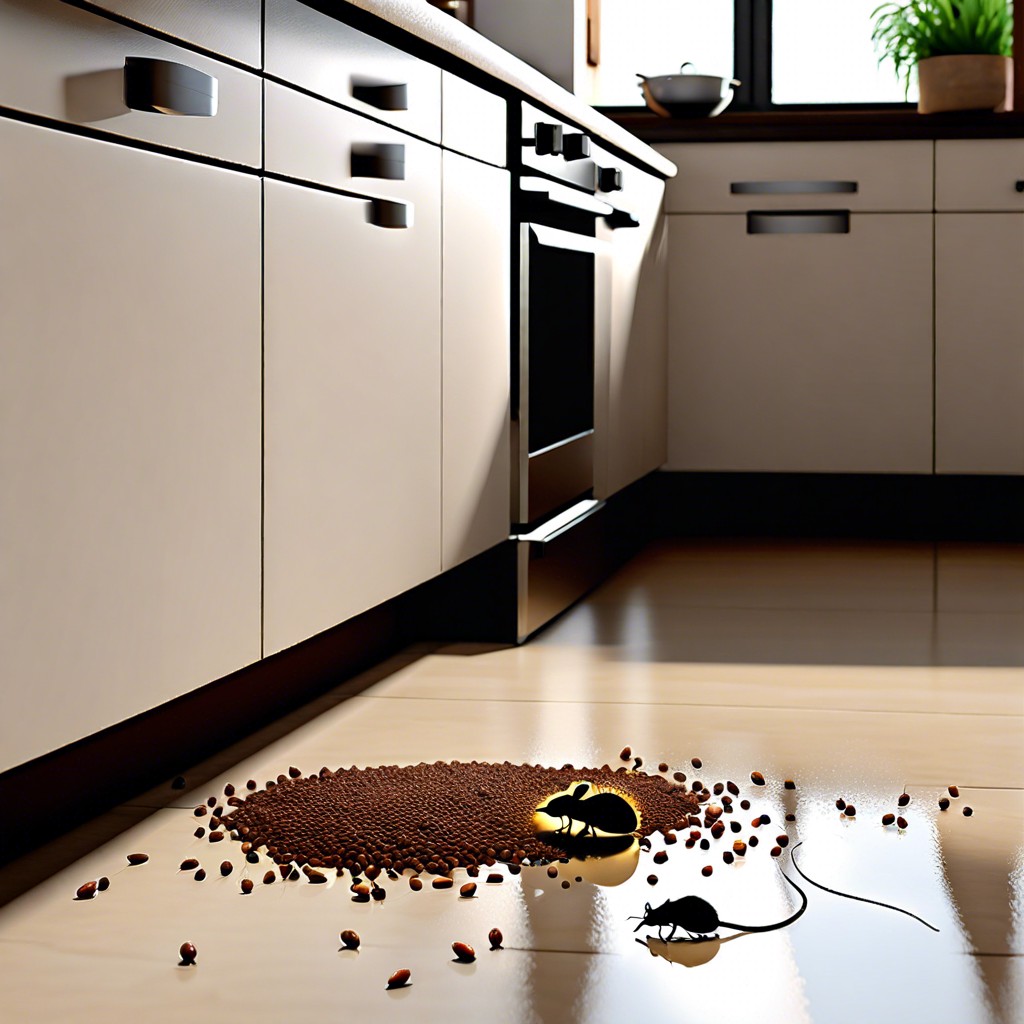Last updated on
Finding dead insects or mouse droppings in your kitchen typically indicates a potential pest infestation that requires immediate attention to maintain cleanliness and health safety.
Key takeaways:
- Mouse droppings resemble small, dark grains of rice.
- Cockroach droppings look like coffee grounds or black pepper specks.
- Correct identification leads to more effective eradication.
- Use caution and disinfectant to clean up pest droppings safely.
- Insect droppings vary in appearance, from pepper-like specks to wood-colored pellets.
What's Inside
Identifying Mouse and Cockroach Droppings

Mouse droppings typically look like small, dark grains of rice, about 3 to 8 mm in length. They are usually pointed at one or both ends and can be found in places where food is stored or along the walls.
On the other hand, cockroach droppings appear more like coffee grounds or black pepper specks, particularly from smaller species. Larger roaches leave behind cylindrical droppings that have ridges down the sides and are blunt at the ends. These can often be found near food sources or in dark, undisturbed areas such as under sinks, behind appliances, or inside cabinets.
If you spot either type, it’s a clear signal of an infestation. Take action quickly to clean the affected areas and consider bringing in pest control professionals to assess and tackle the issue effectively. Remember, cleanliness is your first line of defense, so maintaining a tidy kitchen can mitigate these unsettling discoveries.
Differentiating Between Mouse, Cockroach, and Other Pest Droppings
Determining whether you’re dealing with mice or cockroaches, or perhaps another unwelcome guest, comes down to understanding the appearance of their droppings. Mouse droppings are generally about the size and shape of a grain of rice, pointed at the ends and dark in color. They often appear in small clusters.
In contrast, cockroach feces will vary depending on the size of the roach. For larger species, droppings may look like coffee grounds or black pepper, while smaller roaches produce feces that are finer and more dust-like.
Other pests, such as rats, have droppings larger than mice and are banana-shaped. Ensuring correct identification can lead directly to more effective eradication. Keep an eye out for location and quantity as well—mice tend to leave behind theirs in areas where they are nesting or feeding, while roaches scatter theirs more indiscriminately, a signal that helps track the infestation’s extent.
Cleaning Up Pest Droppings Safely & Effectively
When you discover pest droppings, approach the cleanup with caution to avoid health risks. First, don gloves and a mask to prevent any direct contact with hazardous waste. Opt for disposable gloves and throw them away immediately after use.
Sweeping or vacuuming can stir up harmful particles, so instead, gently mist the droppings with a disinfectant spray. This minimizes the risk of airborne pathogens. Let the spray sit for about five minutes.
Use a paper towel to wipe up the droppings, then dispose of it in a sealed plastic bag. It’s crucial to clean the area thoroughly with a disinfectant or a bleach solution to kill any remaining germs. Mix one part bleach to ten parts water for an effective solution.
Lastly, keep an eye on the cleaned area over the next few days, ensuring that it remains free of new droppings or pests. Regular monitoring helps catch any new incursions quickly.
What Does Insect Poop Look Like?
Insect droppings are small but noticeable if you know what to look for. Ants leave behind tiny specks resembling grains of pepper, typically found along their marching trails. Cockroach feces appear as black or brown smears or pellets, often found in dark corners or under sinks. Termites expel small, wood-colored pellets, usually hidden within wooden structures they are infesting.
When cleaning these traces, always wear gloves and a mask to avoid inhaling any possible allergens. Regular cleaning and proper disposal of garbage can help mitigate further contributions from unwelcome guests.




